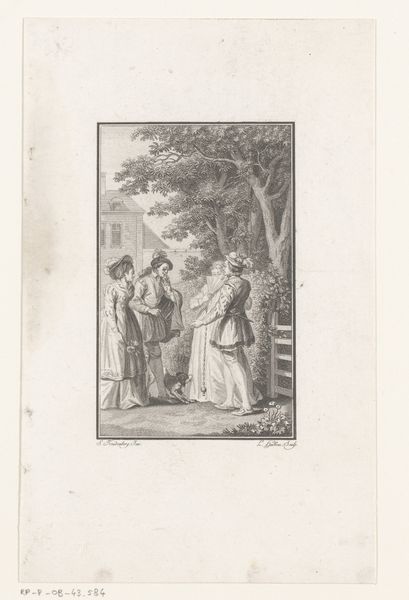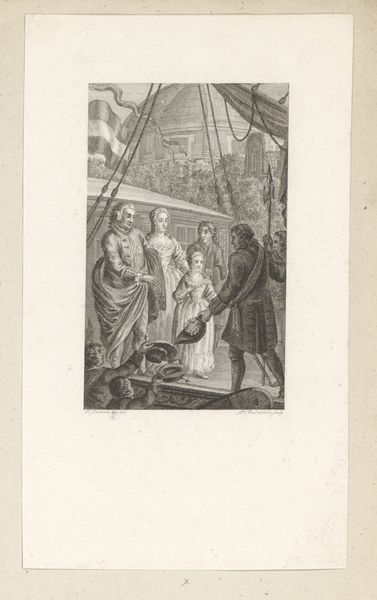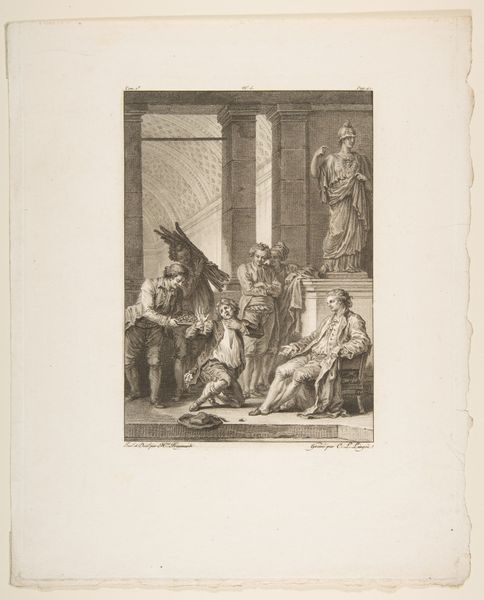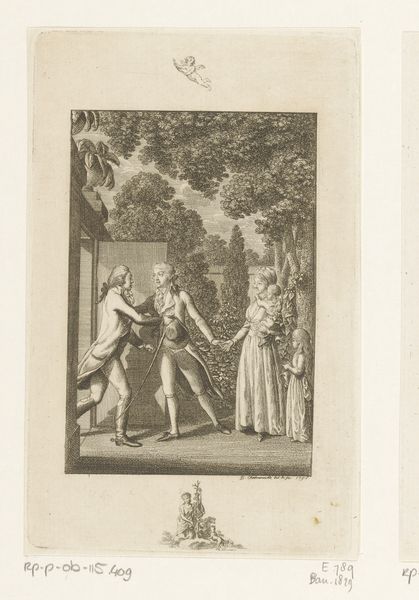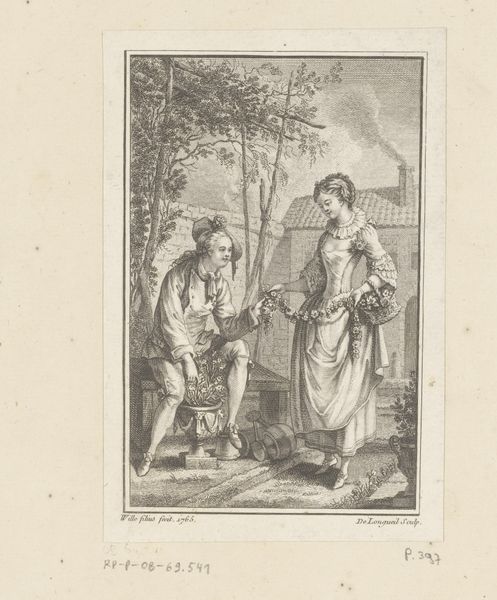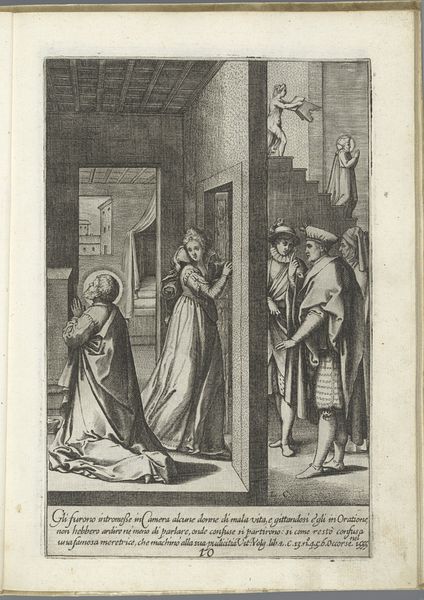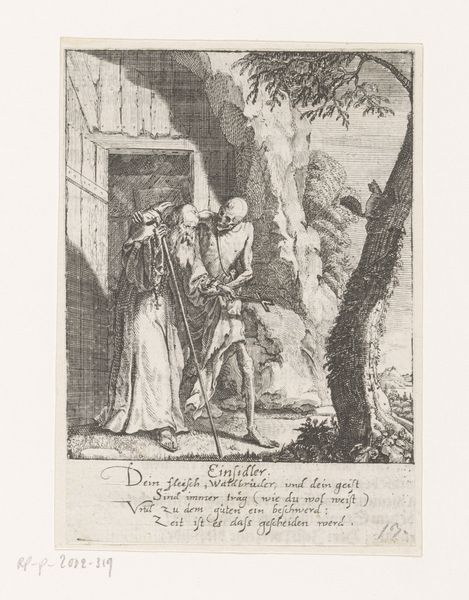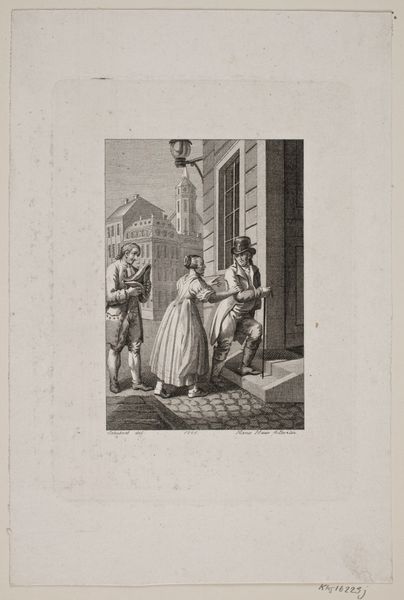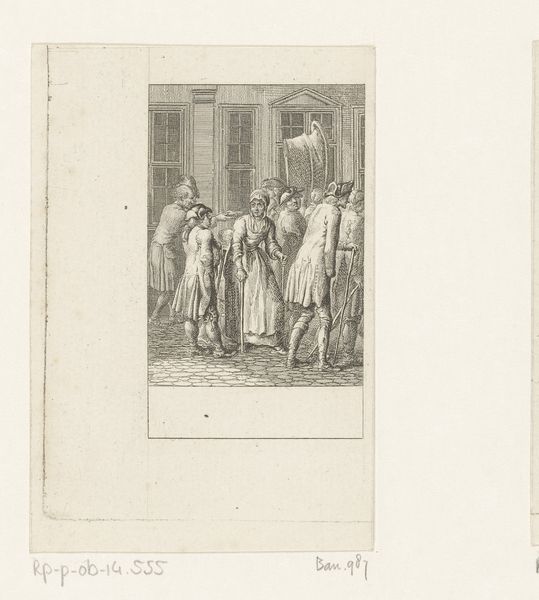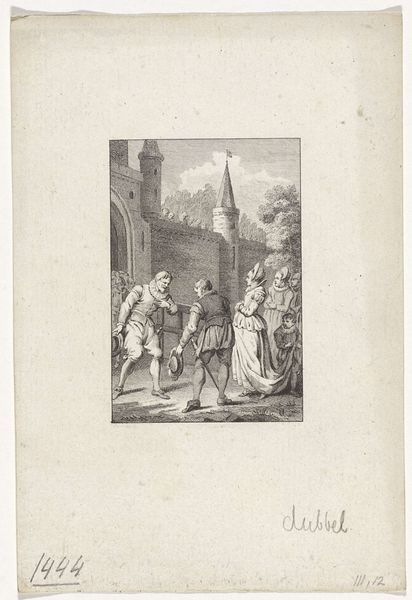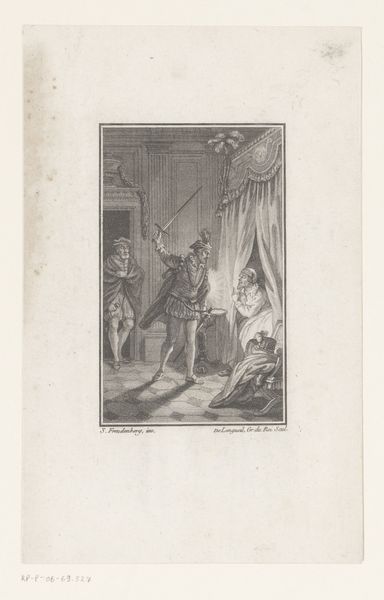
print, engraving
#
portrait
#
medieval
#
narrative-art
# print
#
genre-painting
#
history-painting
#
engraving
Dimensions: height 107 mm, width 70 mm
Copyright: Rijks Museum: Open Domain
Meno Haas created this print, “Gustav Wasa wordt herkend in Rankehytta,” sometime in the late 18th or early 19th century. The scene depicts a pivotal moment in Swedish history, the recognition of Gustav Vasa. It's intriguing to consider this image in the context of 18th-century Europe, a time of shifting social structures and emerging national identities. Vasa, a nobleman, led a rebellion against Denmark, ultimately becoming the King of Sweden. This print suggests themes of loyalty and recognition, but also perhaps the tension between the nobility and the working class. The image shows a woman in peasant clothing recognizing Vasa amongst a group of workers. What did it mean to depict a woman, likely of lower social standing, as the one who identifies the future king? This choice might reflect evolving societal attitudes, subtly challenging traditional power structures. The act of recognition is intimate and deeply personal. The setting, a simple barn filled with hay, contrasts sharply with the grandeur typically associated with royalty, grounding the narrative in the everyday lives of the Swedish people.
Comments
No comments
Be the first to comment and join the conversation on the ultimate creative platform.
